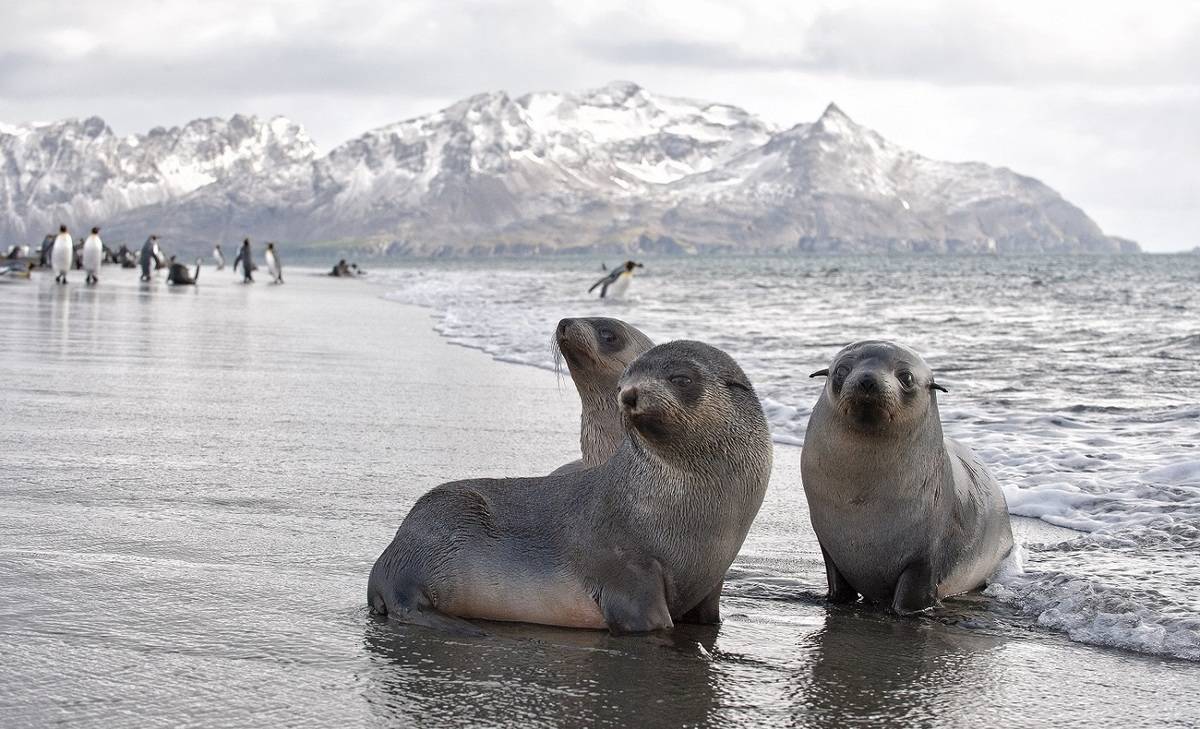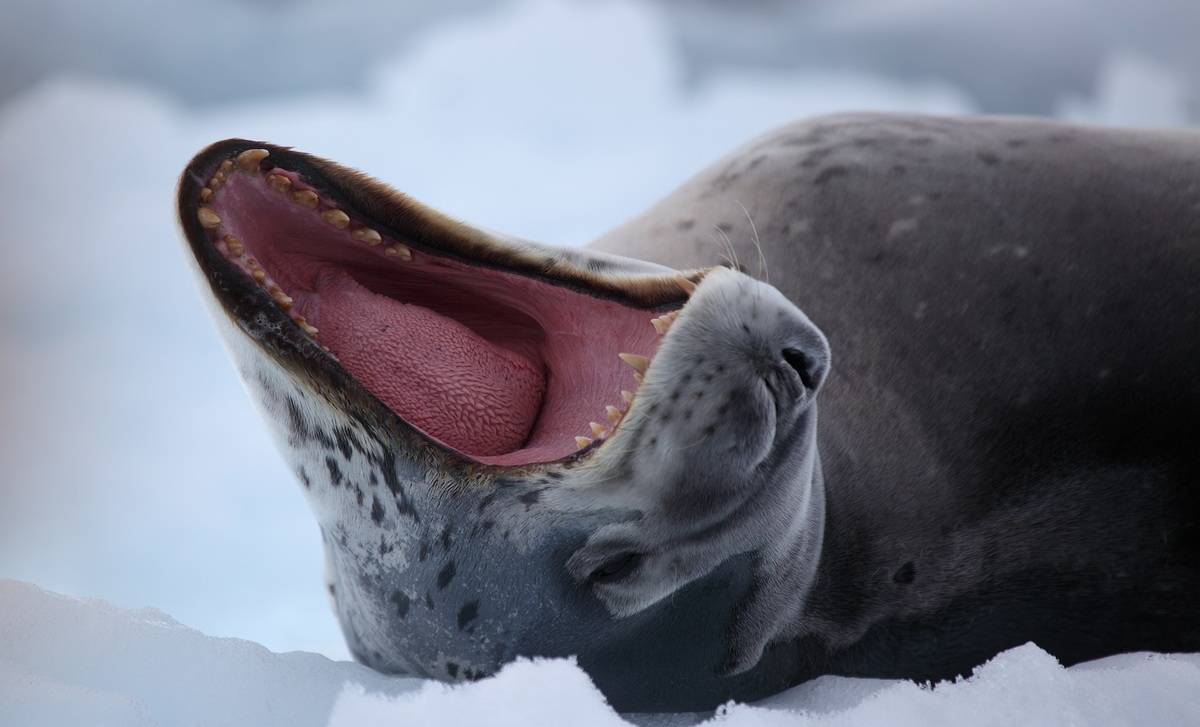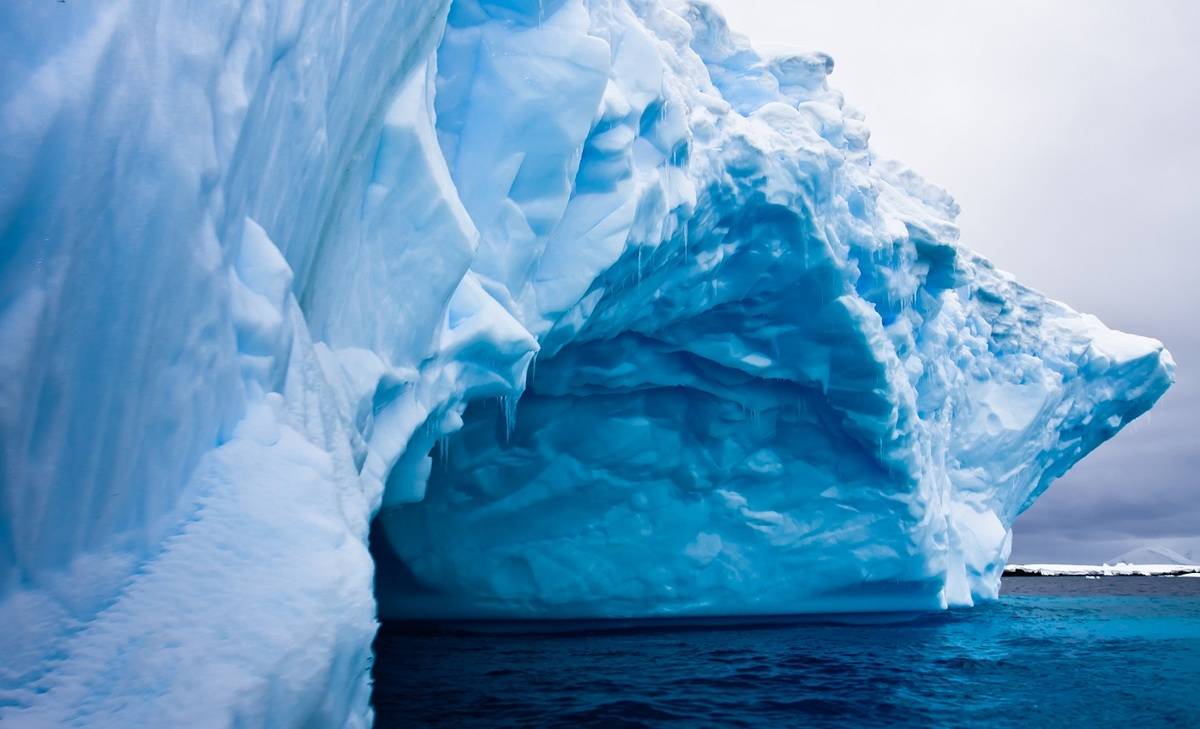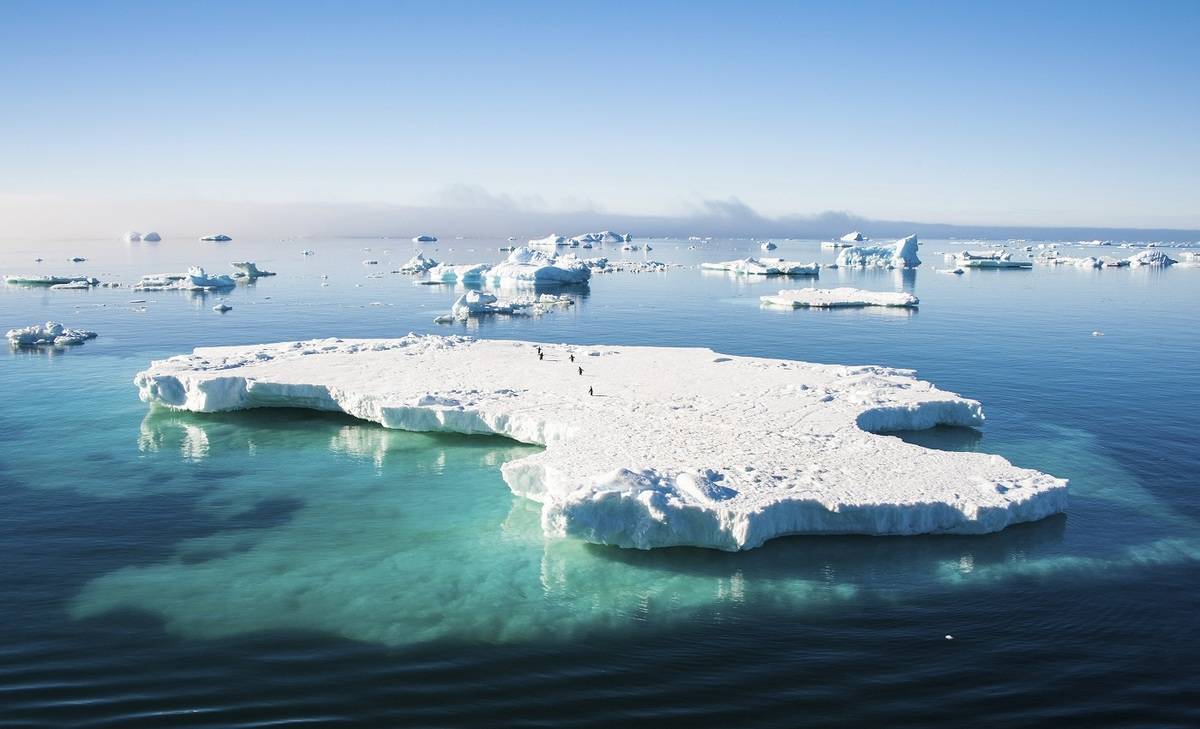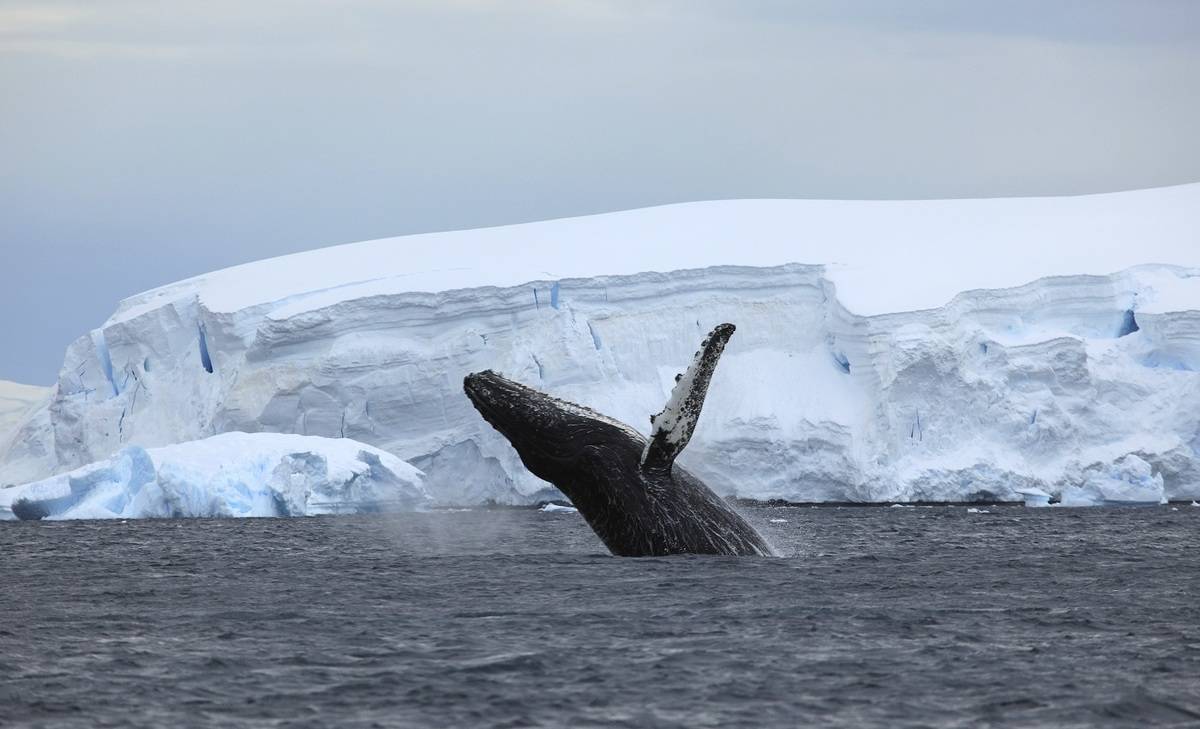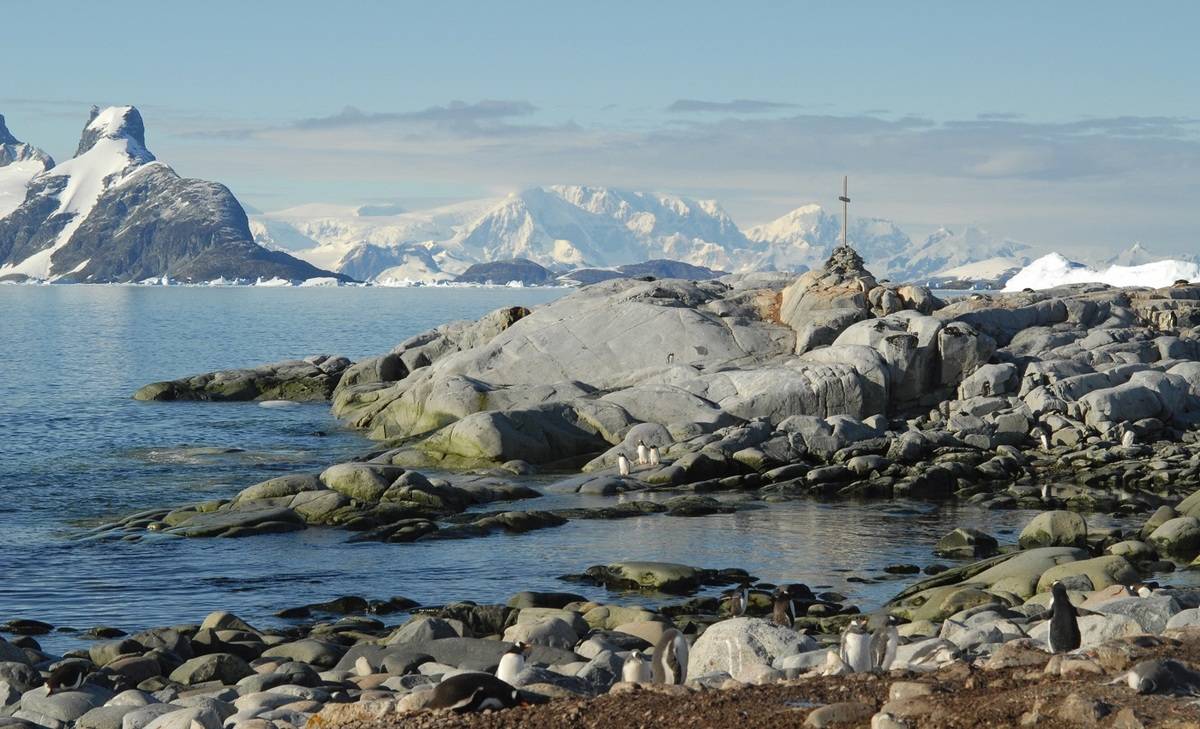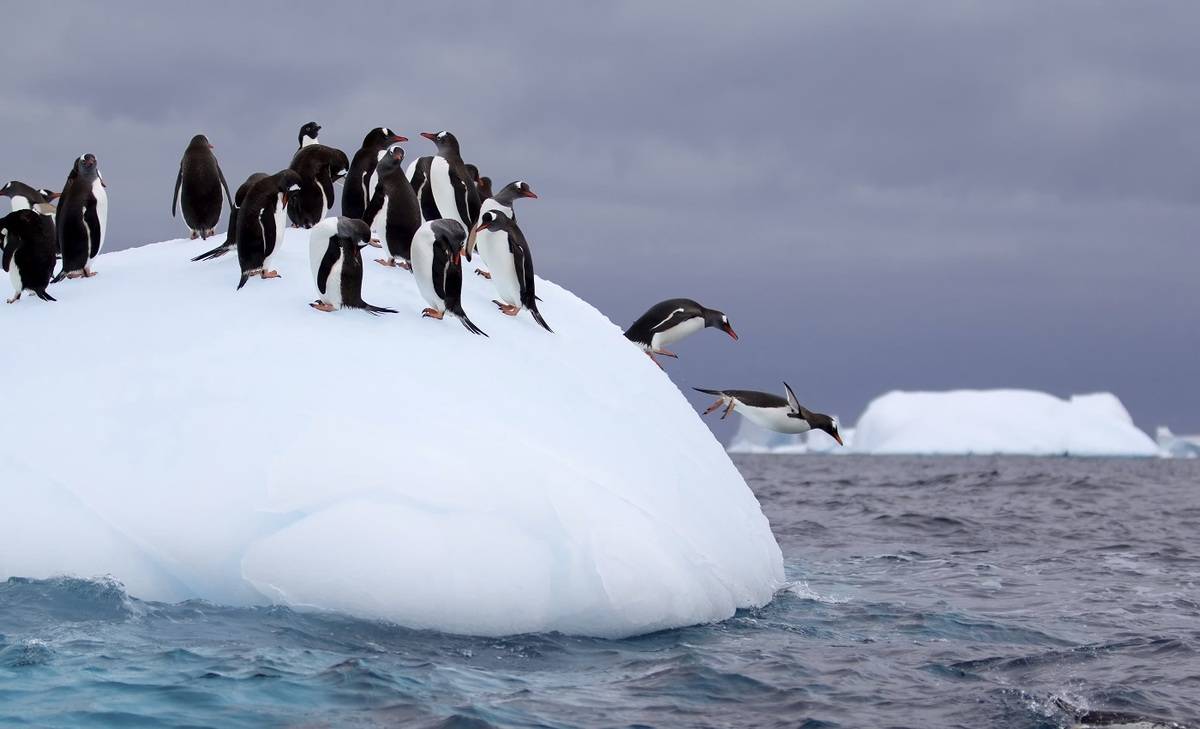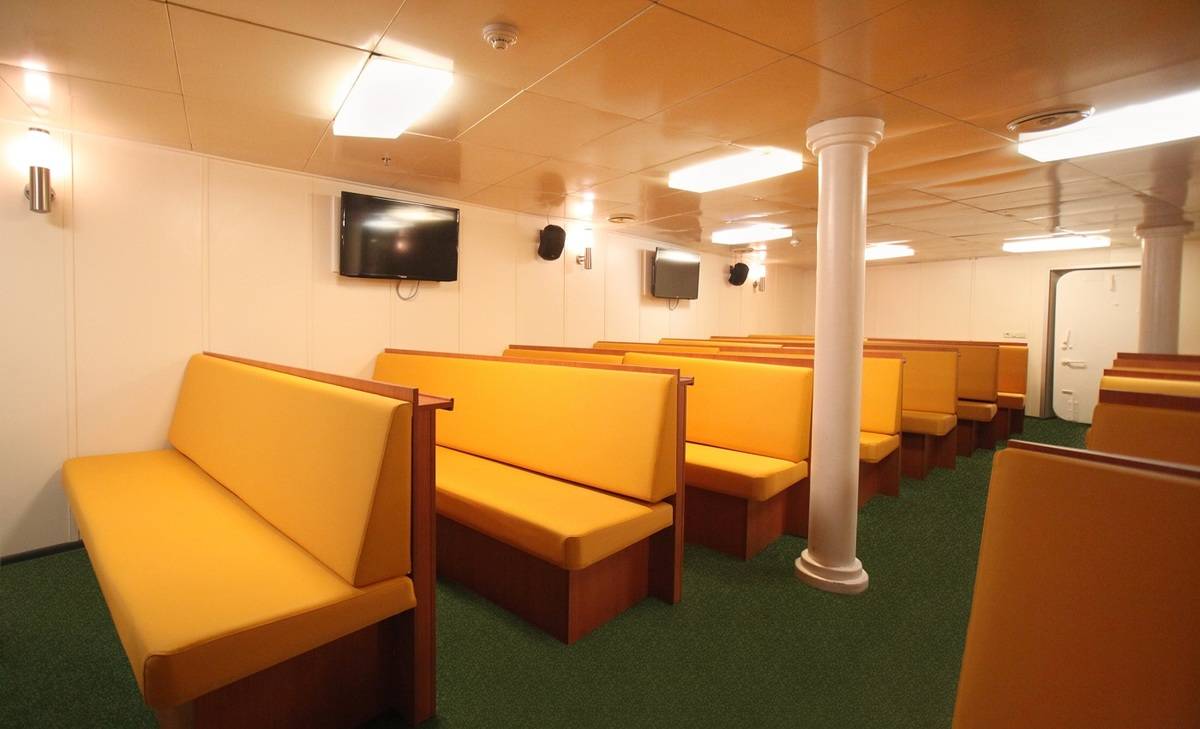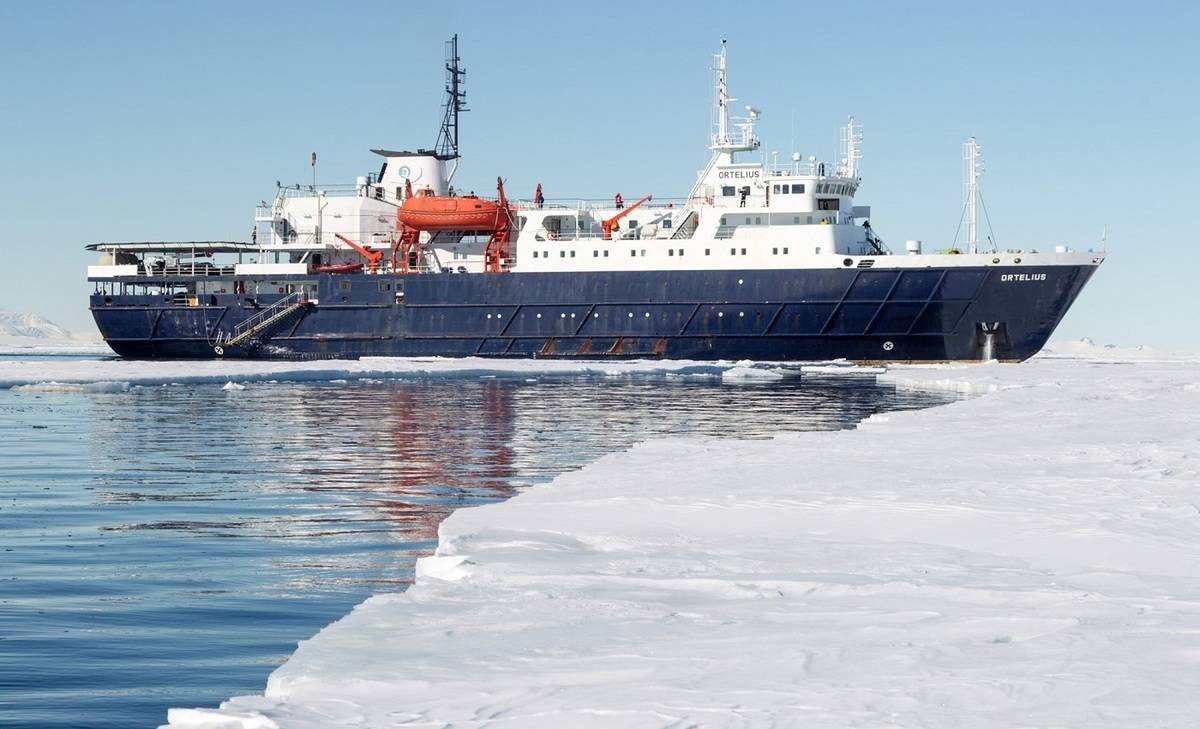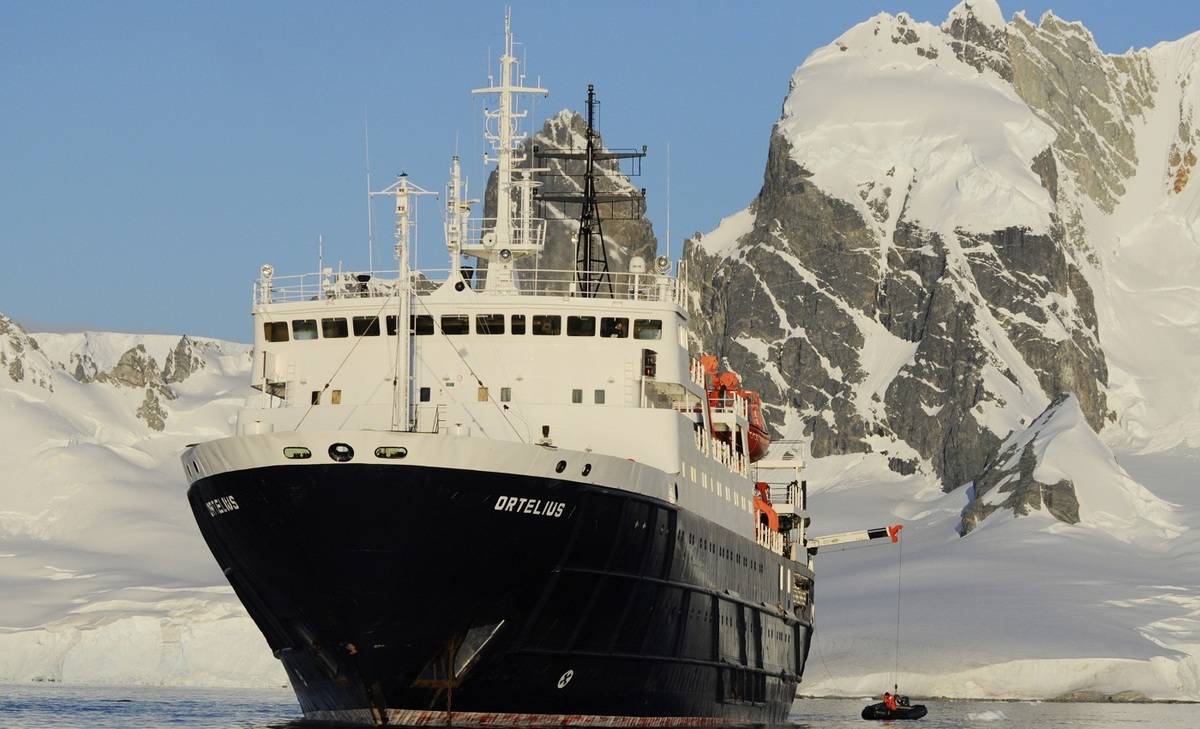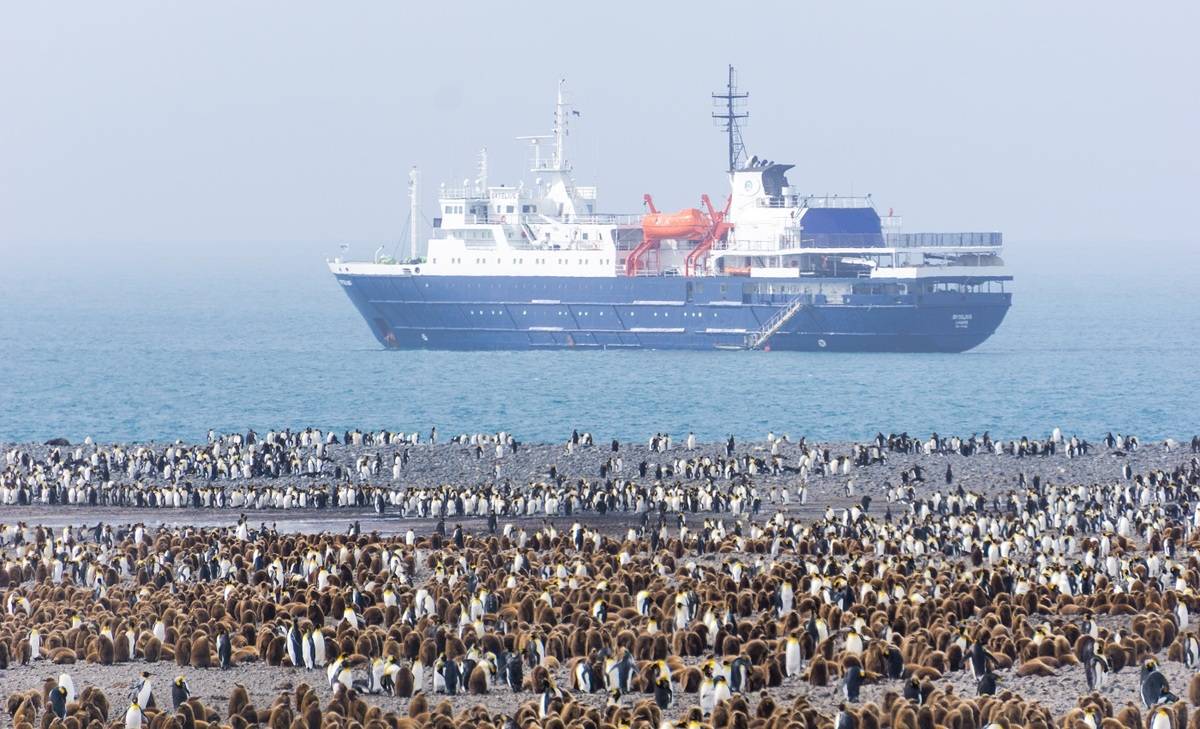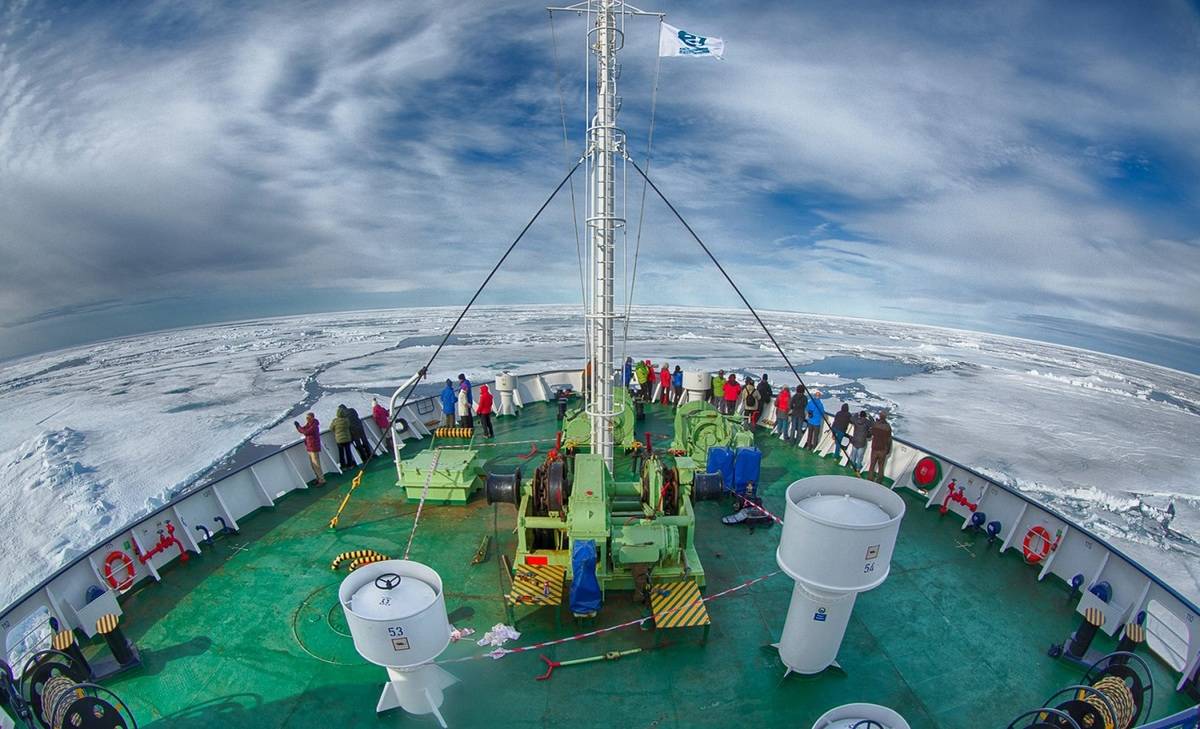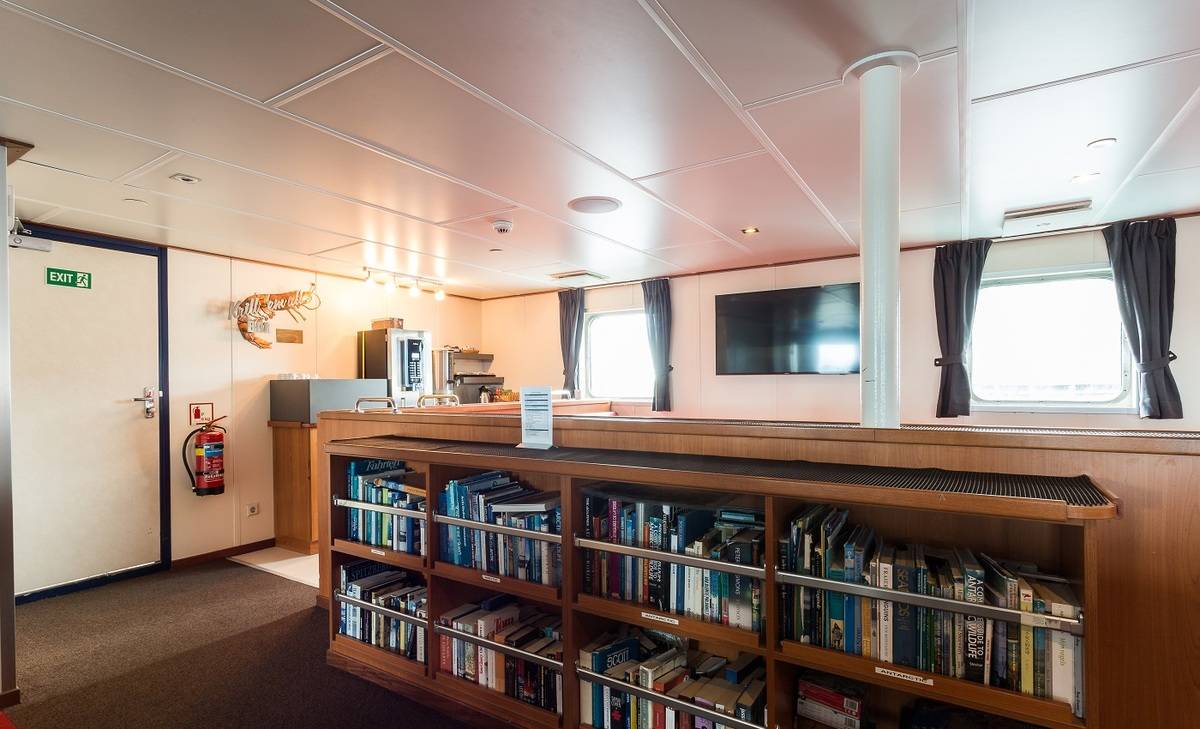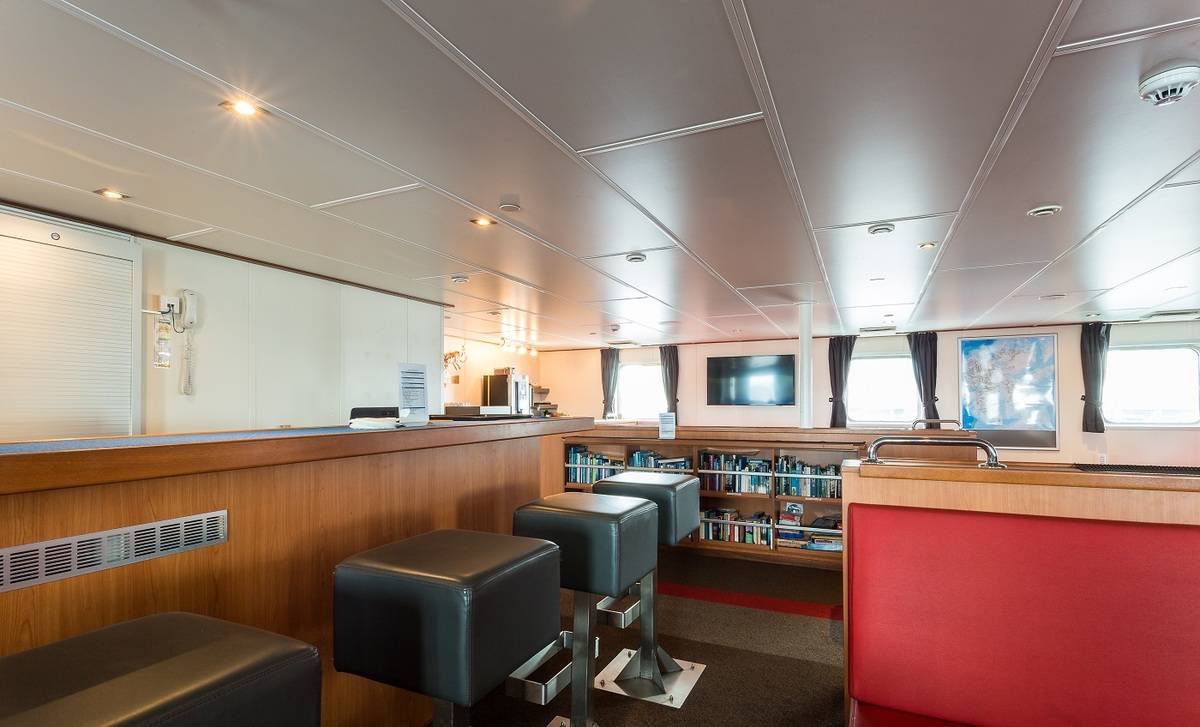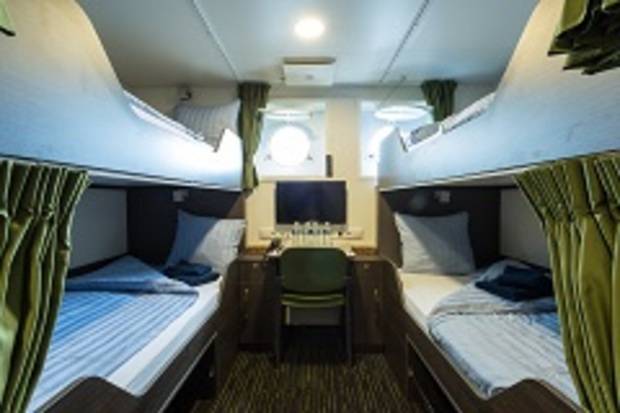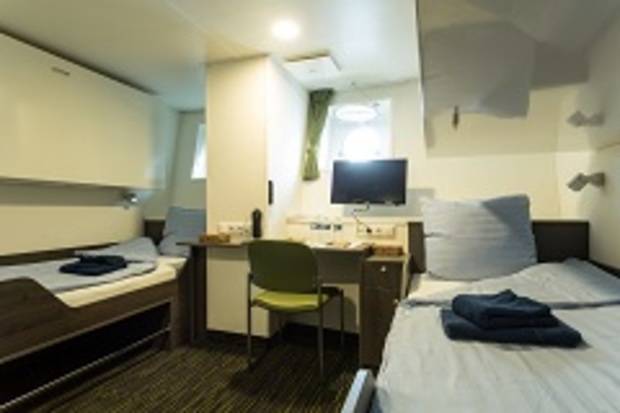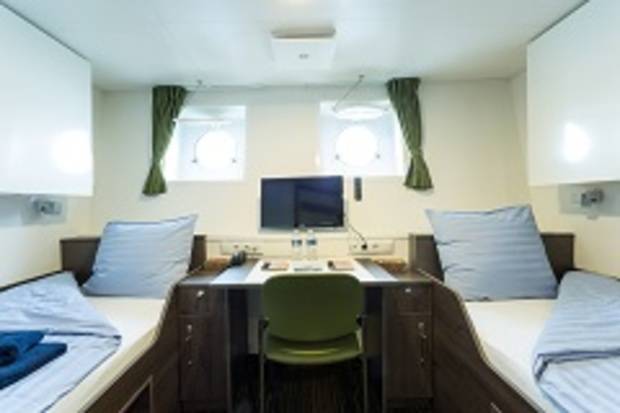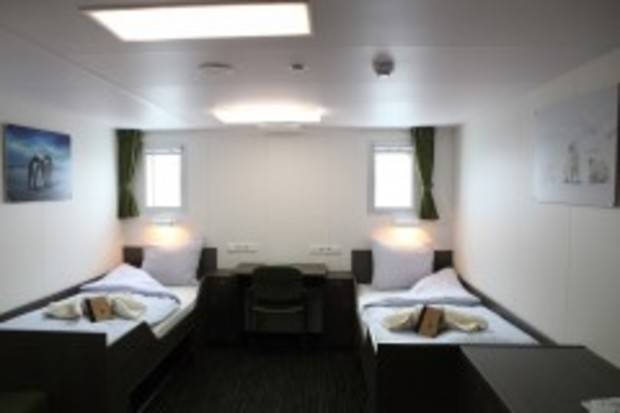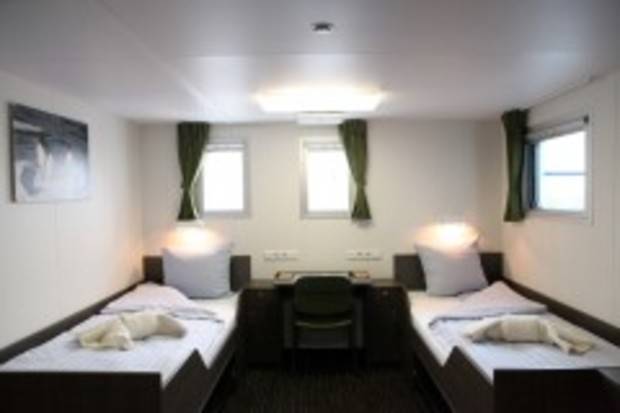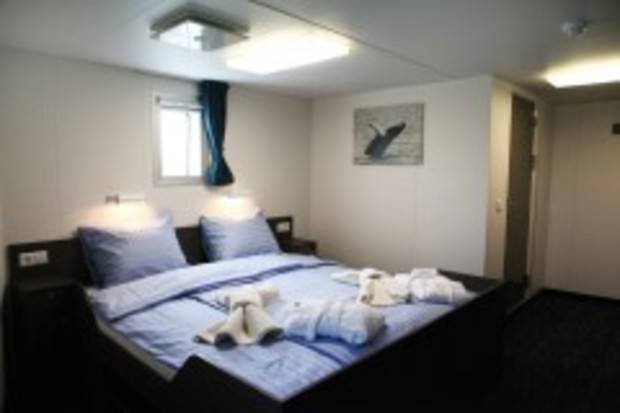Ross Sea Including Helicopters
34 Days - Ortelius
Join us on a 34 day exploratory voyage to the Antarctic Peninsula, to the rarely visited volcanic Peter I Island, to the huts of the British explorers Ernest Shackleton and Robert Falcon Scott on Ross Island, to McMurdo Station and the Dry Valleys and to Campbell Island, home to the Southern Royal Albatrosses. Explore the Ross Sea by Zodiac cruising and Helicopter flights!
from USD $28450pp

Home » 34 Day M/V Ortelius: Ross Sea Including Helicopters
Itinerary Highlights
- Travel to the rarely visited volcanic Peter I Island
- Helicopter flights over Cape Evans, Ross Ice Shelf, Dry Valleys and Cape Royds (weather permitting)
- Tick another UNESCO World Heritage Site off your list - Campbell Island and its blooming vegetation
- Sail across the Ross Sea and visit Ross Island - the famous landing site in the British Expeditions
Itinerary in Brief
- Day 1: Depart Ushuaia
- Day 2-3: At Sea
- Day 4: Antarctic Peninsula
- Day 5-6: Bellingshausen Sea
- Day 7: Peter I Island
- Day 8-14: Amundsen Sea
- Day 15-18: Ross Ice Shelf
- Day 19-21: Ross Sea
- Day 16-20: Ross Island
- Day 22-23: West Coast of Ross Sea
- Day 24: Cape Adare
- Day 25: At Sea
- Day 26: Balleny Islands
- Day 27-29: At sea
- Day 30: Macquarie Island
- Day 31: At sea
- Day 32: Campbell Island
- Day 33: At Sea
- Day 34: Arrive in Bluff, New Zealand
Please note, you will gain a day during this cruise as you cross the International Date Line.
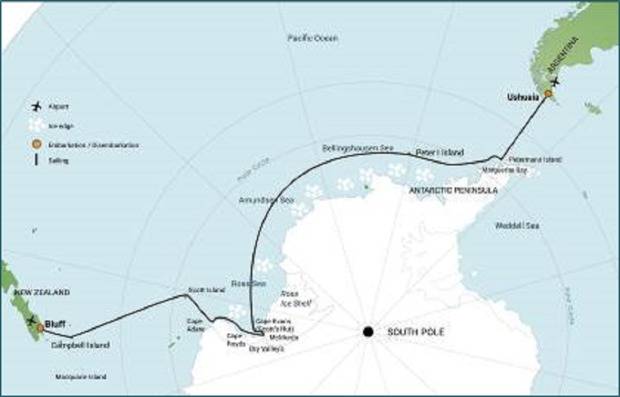
Day 1: Depart Ushuaia
Your voyage begins where the world drops off. Ushuaia, Argentina, reputed to be the southernmost city on the planet, is located on the far southern tip of South America. Starting in the afternoon, you embark from this small resort town on Tierra del Fuego, nicknamed “The End of the World,” and sail the mountain-fringed Beagle Channel for the remainder of the evening.
Day 2-3: At Sea
Over the next two days on the Drake Passage, you enjoy some of the same experiences encountered by the great polar explorers who first charted these regions: cool salt breezes, rolling seas, maybe even a fin whale spouting up sea spray. After passing the Antarctic Convergence – Antarctica’s natural boundary, formed when north-flowing cold waters collide with warmer sub-Antarctic seas – you are in the circum-Antarctic upwelling zone. Not only does the marine life change, the avian life changes too. Wandering albatrosses, grey-headed albatrosses, black-browed albatrosses, light-mantled sooty albatrosses, cape pigeons, southern fulmars, Wilson’s storm petrels, blue petrels, and Antarctic petrels are a few of the birds you might see.
Day 4: Antarctic Peninsula
You arrive at the Antarctic Peninsula near the Antarctic Circle in the afternoon. If sea ice allows it, you can then continue through Pendleton Strait and attempt a landing at the rarely visited southern tip of Renaud Island. Here you have the opportunity to see the first Adélie penguins of the trip as well as enjoy spectacular views of the icebergs in this surreal, snow-swept environment.
Day 5-6: Bellingshausen Sea
From the peninsula you head toward the open sea, your course set for Peter I Island.
Day 7: Peter I Island
Known as Peter I Øy in Norwegian, this is an uninhabited volcanic island in the Bellingshausen Sea. It was discovered by Fabian von Bellingshausen in 1821 and named after Peter the Great of Russia. The island is claimed by Norway and considered its own territory, though it is rarely visited by passenger vessels due to its exposed nature. If weather and ice conditions allow, you may enjoy a helicopter landing on the glaciated northern part of the island. This is a unique chance to land on one of the most remote islands in the world.
Day 8-14: Amundsen Sea
You then sail through the Amundsen Sea, moving along and through the outer fringes of the pack ice. Ice conditions are never the same from year to year, though we aim to take advantage of the opportunities that arise if sea ice is present. Emperor penguins, groups of seals lounging on the ice floes, orca and minke whales along the ice edge, and different species of fulmarine petrels are possible sights in this area.
Day 15-18: Ross Ice Shelf
The next goal is to enter the Ross Sea from the east, venturing south toward the Bay of Whales and close to Roosevelt Island (named in 1934 by the American aviator Richard E. Byrd for President Franklin D. Roosevelt). The Bay of Whales is part of the Ross Ice Shelf, the largest ice shelf in the world, and is constantly changing with the receding ice masses. Large icebergs are present here, along with great wildlife opportunities. Roald Amundsen gained access to the shelf en route to the South Pole, which he reached on December 14, 1911. Also, the Japanese explore Nobu Shirase had his camp in this area in 1912, at Kainan Bay. You may make a helicopter landing on the ice shelf if conditions allow. During this part of the voyage, we will also cross the International Date Line.
Day 19-21: Highlights of the Ross Sea
Keeping to the Ross Sea, your aim is now to visit Ross Island. In this location you can see Mount Erebus, Mount Terror, and Mount Byrd, as well as many other famous spots that played an important role in the British expeditions of the last century: Cape Royds, where Ernest Shackleton’s cabin still stands; Cape Evans, where the cabin of Robert Falcon Scott can still be seen; and Hut Point, from which Scott and his men set out for the South Pole.
If ice is blocking the way but weather conditions are favorable, you may use the helicopters to land in one or more spots in this area. The American scientific base of McMurdo Station and New Zealand’s Scott Base are other possible locations you might visit. From McMurdo Station you could also make a 10-km hike (6 miles) to Castle Rock, where there are great views across the Ross Ice Shelf toward the South Pole. Additionally, you may make a helicopter landing in Taylor Valley, one of the Dry Valleys, where conditions are closer to Mars than anywhere else on Earth.
Day 22-23: West of Ross Sea
Sailing north along the west coast of the Ross Sea, you pass the Drygalski Ice Tongue and Terra Nova Bay. If ice conditions allow, you then land at Inexpressible Island, which has a fascinating history in connection to the less-known Northern Party of Captain Scott’s expedition. It is also home to a large Adélie penguin rookery. Should sea ice prevent entry into Terra Nova Bay, you may head farther north to the protected area of Cape Hallett and its own Adélie rookery.
Day 24: Cape Adare
You next attempt a landing at Cape Adare, where for the first time humans wintered on the Antarctic Continent: The Norwegian Borchgrevink stayed in here 1899, taking shelter in a hut that to this day is surrounded by the largest colony of Adélie penguins in the world.
Day 25: At Sea
Sailing through the sea ice at the entrance of the Ross Sea, you start your journey north through the Southern Ocean. The goal is to set a course for the Balleny Islands, depending on weather conditions.
Day 26: Balleny Islands
Your intended route is past Sturge Island in the afternoon, getting an impression of these windswept and remote islands before crossing the Antarctic Circle.
Day 27-29: At Sea
You once again enter the vast expanse of the Southern Ocean. Seabirds are prolific on this leg, during which we hope to enjoy good weather conditions.
Day 30: Macquarie Island
Macca, also known as Macquarie Island, is a Tasmanian State Reserve that in 1997 became a World Heritage Site. The Australian Antarctic Division has its permanent base on this island, which Australian sealer Frederick Hasselborough discovered while searching for new sealing grounds. The fauna on Macquarie is fantastic, and there are colonies of king, gentoo, and southern rockhopper penguins – as well as almost one million breeding pairs of the endemic royal penguin. Elephant seals and various fur seal species, such as the New Zealand fur seal, are also present.
Day 31: At Sea
Heading northwest to Campbell Island, you’re once again followed by numerous seabirds.
Day 32: Campbell Island
The plan today is to visit the sub-Antarctic New Zealand Reserve and UNESCO World Heritage Site of Campbell Island, enjoying its luxuriantly blooming vegetation. The fauna on Campbell Island is also a highlight, with a large and easily accessible colony of southern royal albatrosses on the main island. Breeding on the satellite islands are wandering, Campbell, grey-headed, black-browed, and light-mantled albatrosses. There are also three breeding penguin species present: eastern rockhopper, erect-crested, and yellow-eyed penguins. In the 18th century, seals in the area were hunted to extinction, but the elephant seals, fur seals, and sea lions have since recovered.
Day 33: At Sea
Take in the vast horizons of your final sea day before you reach New Zealand.
Day 34: Disembark in Port Bluff, New Zealand
Every adventure, no matter how sublime, must eventually come to an end. You disembark in Bluff, the southernmost town in New Zealand, and return home with memories that will accompany you wherever your next adventure lies.
| Dates | Cabin | From | Special Offer |
|---|---|---|---|
| 14 Jan 2023 - 16 Feb 2023 | USD $28450pp | ||
| Quadruple Porthole Cabin | USD $28450pp | Contact us | |
| Twin Porthole Cabin | USD $35800pp | Contact us | |
| Twin Window Cabin | USD $37150pp | Contact us | |
| Twin Deluxe Cabin | USD $38950pp | Contact us | |
| Superior Cabin | USD $40950pp | Contact us | |
**Prices are per person based on twin / shared accommodation.
**Single supplements may apply
Cabin Details
Quadruple Porthole Cabin
Located on deck 3; two porthole windows, 2 upper and 2 lower berths, private shower and toilet, desk and chair, hair dryer and ample storage space.
Triple Porthole Cabin
Located on Deck 3; two portholes, 1 upper and 2 lower berths, private shower and toilet, desk and chair, hair dryer and ample storage space.
Twin Porthole Cabin
Located on Deck 3 and on Deck 4; two porthole windows, private toilet and shower, two single lower berths, desk and chair, hair dryer and ample storage space. Cabins on deck 4 are quieter than cabins on deck 3: farther away from the noise of engines and generators. Access to the forward observation deck.
Twin Window Cabin
Three windows; 2 lower berths; Private shower & toilet; Desk & chair; Flatscreen TV; Telephone & WiFi (supplemented); Hair dryer; Ample storage space
Twin Deluxe Cabin
Located on Deck 5; three windows; 2 lower berths; Private shower & toilet; Desk & chair; Small sofa; Refrigerator; Coffee & tea maker; Flatscreen TV; Telephone & WiFi (supplemented); Hair dryer; Ample storage space
Superior Cabin
Located on Deck 5; two windows minimum, one double bed, one single (sofa) bed, private toilet and shower, desk and chair, flat screen TV, refrigerator, hairdryer, coffee & tea maker, ample storage space. The quietest cabin deck and has the best access to upper observation decks and the ship's bridge.
Ortelius Deckplan
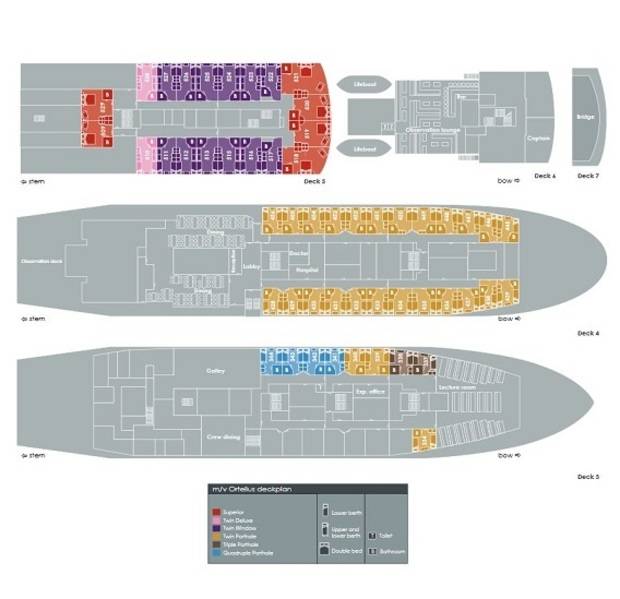
Specifications
- Passengers: 116-123 in 53 cabins
- Staff & crew: 52
- Length: 90.95 meters
- Breadth: 17.20 meters
- Draft: 5.4 meters
- Ice class: UL1 (Equivalent to 1A)
- Displacement: 4090 tonnes
- Propulsion: 6 ZL 40/48 SULZER
- Speed: 10.5 knots average cruising speed
- Year built: 1989
Whats included?
- Voyage aboard M/V Ortelius
- All meals throughout the voyage aboard the ship including snacks, coffee and tea.
- All shore excursions and activities throughout the voyage by Zodiac.
- Program of lectures by noted naturalists and leadership by experienced expedition staff.
- Free use of rubber boots and snowshoes.
- Luggage transfer from pick-up point to the vessel on the day of embarkation, in Ushuaia.
- Group transfer from the vessel in Bluff to the airport in Invercargill.
- Ship-to-shore helicopter transfers (with no specific amount of helicopter time guaranteed)
- All miscellaneous service taxes and port charges throughout the programme.
- Comprehensive pre-departure material.
What’s not included?
- Any airfare, whether on scheduled or charter flights
- Pre- and post- land arrangements.
- Passport and visa expenses.
- Government arrival and departure taxes.
- Meals ashore.
- Baggage, cancellation and personal insurance (which is mandatory).
- Excess baggage charges and all items of a personal nature such as laundry, bar, beverage charges and telecommunication charges.
- The customary gratuity at the end of the voyages for stewards and other service personnel aboard (guidelines will be provided).
Notes
PLEASE NOTE: All itineraries are for guidance only. Programs may vary depending on ice, weather, and wildlife conditions. Landings are subject to site availabilities, permissions, and environmental concerns per IAATO regulations. Official sailing plans and landing slots are scheduled with IAATO prior to the start of the season, but the expedition leader determines the final plan. Flexibility is paramount for expedition cruises. Special note about landing permits: Landings at the Macquarie Islands, Campbell Islands, and McMurdo Station may have limitations and are subject to change. Additional sites like the Balleny Islands as well as extra time in the Ross Sea may be offered as an alternative. The average cruising speed of the vessel is 10.5 knots.

